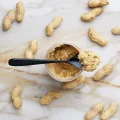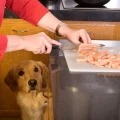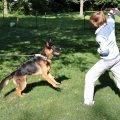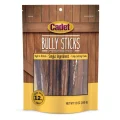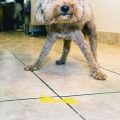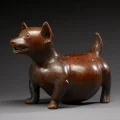Bumps on a dog’s nose can be a cause for concern for any pet parent. However, it’s important to note that while some bumps may be harmless, others may require immediate veterinary attention. In this article, we will explore the various types of bumps that can occur on a dog’s nose, their causes, and treatment options.
One of the most common types of bumps that can appear on a dog’s nose is a pimple. Just like humans, dogs can develop acne, which results in the formation of whiteheads and blackheads. This can occur on their stomachs, genital area, and even their nose. While pimples may be unsightly, they are generally harmless and may disappear on their own. However, if your dog’s pimples become infected or start to bleed, it’s important to seek veterinary attention.
Another type of bump that may appear on a dog’s nose is a wart. Warts are small, raised bumps that may have a rough texture. They are caused by a virus and are generally harmless. However, if the wart becomes irritated or starts to bleed, it’s important to have it checked by a veterinarian.
A cyst is another type of bump that may appear on a dog’s nose. Cysts are fluid-filled sacs that can occur anywhere on the body, including the nose. While most cysts are harmless, they can become infected or rupture, which can lead to more serious health issues. If you notice a cyst on your dog’s nose, it’s important to have it examined by a veterinarian.
In some cases, a bump on a dog’s nose may be a sign of a more serious health issue. For example, a tumor may develop on the nose, which can be cancerous or non-cancerous. If you notice a lump on your dog’s nose that is growing or changing in size, shape, or color, it’s important to seek veterinary attention immediately.
Treatment options for bumps on a dog’s nose will depend on the underlying cause. In some cases, the bump may disappear on its own. However, if the bump is causing discomfort or is infected, it may need to be treated with medication or removed surgically. Your veterinarian will be able to recommend the best course of treatment based on your dog’s individual needs.
Bumps on a dog’s nose can be a cause for concern for any pet parent. While some bumps may be harmless, others may require immediate veterinary attention. If you notice a bump on your dog’s nose, it’s important to have it examined by a veterinarian to determine the underlying cause and appropriate treatment options.
Treating Keratosis on a Dog’s Nose
Nasal hyperkeratosis, also known as keratosis, is a condition where the skin on a dog’s nose becomes thickened and dry, causing discomfort and an increased risk of infection. If your dog is suffering from keratosis, there are several steps you can take to provide relief and prevent further complications.
First and foremost, it’s important to monitor your dog’s nose daily for any changes or signs of infection. Look for redness, swelling, discharge, or a foul odor, which could indicate a bacterial or fungal infection. If you notice any of these symptoms, it’s important to take your dog to the vet for treatment.
To keep your dog’s nose moisturized and prevent keratosis from worsening, you can use non-toxic, topical moisturizing rinses, ointments, balms, and mild, anti-dandruff shampoos. These products can help soften and hydrate the skin on your dog’s nose, making it more comfortable and less prone to infection.
When using any topical treatments, it’s important to follow the instructions carefully and avoid getting the product in your dog’s eyes or mouth. You may also need to apply the product several times a day, depending on the severity of the condition.
In addition to topical treatments, you can also make dietary changes to support your dog’s skin health. Incorporating foods that are rich in omega-3 fatty acids, such as salmon, sardines, and flaxseed, can help improve the health of your dog’s skin and coat.
If your dog’s keratosis is severe or doesn’t improve with home treatments, your vet may recommend more aggressive treatment options, such as laser therapy or surgery. However, in most cases, with proper care and attention, you can manage your dog’s keratosis and keep their nose healthy and comfortable.
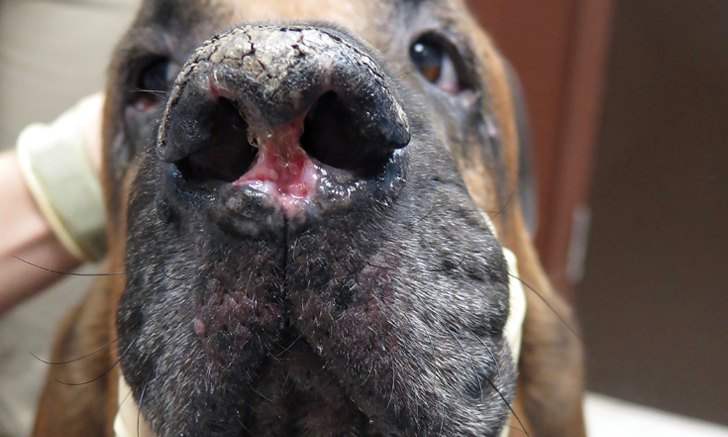
What Causes the Growth on My Dog’s Nose?
If you’ve noticed that your dog’s nose is thicker and harder than usual, it’s possible that they have developed a condition called hyperkeratosis. Hyperkeratosis is a skin disorder that causes excessive skin growth, specifically an overproduction of keratin, which is a fibrous protein that makes up the outer layer of skin. This can lead to the development of thick, crusty, and rough patches of skin on the nose or paw pads.
There are two types of hyperkeratosis that commonly affect dogs: nasal hyperkeratosis and footpad hyperkeratosis. Nasal hyperkeratosis affects the skin on the nose and can cause the nose to become thick, dry, and cracked. Footpad hyperkeratosis, on the other hand, affects the paw pads and can cause them to become thick, hard, and callused.
The causes of hyperkeratosis in dogs vary, but it can be the result of genetics, an underlying medical condition, or environmental factors. Some breeds, such as the Bull Terrier and English Bulldog, are more prone to developing hyperkeratosis than others. Medical conditions such as hypothyroidism, autoimmune diseases, and allergies can also contribute to the development of hyperkeratosis. Environmental factors, such as exposure to harsh chemicals or extreme weather conditions, can also play a role.
If you suspect that your dog has hyperkeratosis, it’s important to take them to the vet for a proper diagnosis. Depending on the severity of the condition, your vet may recommend treatment options such as topical creams, ointments, or oral medications. In some cases, surgery may be necessary to remove excessive tissue growth.
Hyperkeratosis is a condition that causes excessive skin growth and can affect your dog’s nose or paw pads. If you notice any changes in your dog’s skin, it’s important to take them to the vet for proper diagnosis and treatment.
Identifying the Spots on a Dog’s Nose
If you’ve noticed spots on your dog’s nose, it’s natural to wonder what they are and if they’re cause for concern. The good news is that, in most cases, these spots are harmless and not a cause for alarm.
One common type of spot that can appear on a dog’s nose is a pimple. Dogs, like humans, can get pimples when thir hair follicles become clogged. Pimples may appear as whiteheads or blackheads and are most commonly found on a dog’s stomach, genital area, and nose.
Another type of spot that can appear on a dog’s nose is a pigmentation spot. These spots are simply areas where the skin has more pigment than the surrounding skin, and they’re completely normal. Pigmentation spots can vary in size and color, ranging from light brown to black.
If you notice raised, crusty, or bleeding spots on your dog’s nose, it’s important to have them evaluated by a veterinarian. These types of spots may indicate a more serious condition, such as skin cancer or an infection.
Spots on a dog’s nose can be caused by a variety of factors, including pimples and pigmentation. While most spots are harmless, it’s important to have any concerning spots evaluated by a veterinarian to ensure your dog’s health and well-being.
Conclusion
It’s important to pay attention to any bumps or changes on your dog’s nose, as they could be a sign of a more serious condition. Most of the time, these bumps are harmless and can be treated with topical moisturizers or anti-dandruff shampoos. However, if you notice any persistent or unusual growths on your dog’s nose, it’s best to consult with a veterinarian to rule out any underlying health issues. By keeping your dog’s nose clean and moisturized, you can help prevent discomfort and reduce the risk of infection. Regular monitoring and proper care can go a long way in keeping your furry friend healthy and happy.


